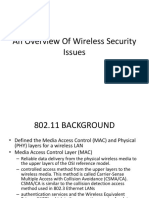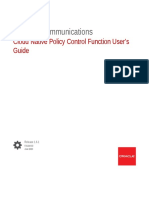0% found this document useful (0 votes)
32 views51 pagesNetwork and IoT Security Part 2
The document covers various aspects of network security, including network definitions, common attacks, and securing wireless networks. It discusses perimeter security controls, access control lists, and the importance of securing IoT devices and SCADA systems. Additionally, it highlights the significance of implementing strong authentication and encryption methods to mitigate risks associated with unauthorized access and data breaches.
Uploaded by
omonkhoa97Copyright
© © All Rights Reserved
We take content rights seriously. If you suspect this is your content, claim it here.
Available Formats
Download as PDF, TXT or read online on Scribd
0% found this document useful (0 votes)
32 views51 pagesNetwork and IoT Security Part 2
The document covers various aspects of network security, including network definitions, common attacks, and securing wireless networks. It discusses perimeter security controls, access control lists, and the importance of securing IoT devices and SCADA systems. Additionally, it highlights the significance of implementing strong authentication and encryption methods to mitigate risks associated with unauthorized access and data breaches.
Uploaded by
omonkhoa97Copyright
© © All Rights Reserved
We take content rights seriously. If you suspect this is your content, claim it here.
Available Formats
Download as PDF, TXT or read online on Scribd
/ 51























































































